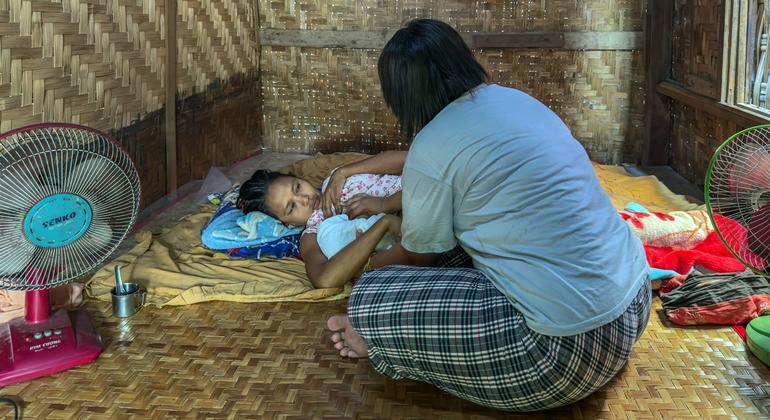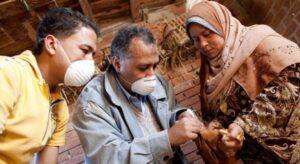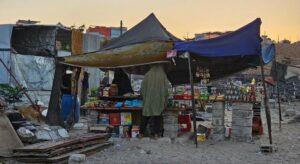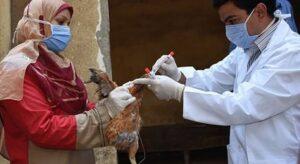“I hate earthquakes. Earthquake took away my mother and my aunt,” five -year -old Khin Yadanar told the UN Children’s Fund (UNICEF) after both her mother and aunt were killed when a brick wall collapsed on them.
About 6.5 million children already needed humanitarian assistance before the earthquake, composing existing vulnerabilities as a result of the brutal civil war between several armed opposition groups and the military junta that seized power in a coup in February 2021.
Families are now facing a further threat from floods and landslides with the arrival of the Monsun season.
Midwives are lifelines
When healthcare collapsed after the earthquake, “Women, especially pregnant mothers, were severely affected,” said Yu Yu, a midwife in Mandalay, who spoke to the UN reproductive health agency, UNFPA.
In the middle of the chaos, midwives have emerged as front line heroes. Indefinite by the post and confrontation of both physical obstacles and emotional challenges, midwives gave hope and life -saving support.
Yu Yu especially remembers the case of one of her patients who were suddenly stranded and unable to reach any medical facilities as she went to work after the earthquake.
Without hesitation, Yu Yu rushed to her side: “When I reached her, she was exhausted, overwhelmed by fear and financial uncertainty after the earthquake,” she remembered.
That day, Yu Yu saved both mother and child when the baby’s umbilical cord had wrapped around the infant’s neck.
UNFPA has implemented mobile clinics to ensure that women and girls continue to receive important healthcare and protection services.
A 10-year-old boy with his parrot on the shoulder of a temporary camp created in the wake of devastating earthquakes that hit Myanmar.
Deep trauma
“She cries in her sleep, and I worry something inside her is broken,” said Thida, mother of eight -year -old Thiri, talking to UNICEF.
During the visible destruction of the earthquake lies a deeper crisis: the deep psychological trauma that young survivors carry.
“I was so scared. My heart knocked so fast-and all I could think of were my parrots and cats at home,” said Thurein Oo, a ten-year-old boy praying in a mosque when the shake hit.
Across the earthquake-affected areas, parents witness similar signs of distress in their children-soaking anxiety, emotional withdrawal and sleepless nights, says UN helpers.
In response to this growing crisis in mental health, UNICEF and its partners have mobilized to provide critical psychological support to affected communities.
Setting up child -friendly spaces, UNICEF aims to promote psychosocial well -being, build resilience, and restore a sense of normality for children’s routines. Through various activities such as drawing, children learn how to cope with their trauma.
“I colored a picture of my mother,” said Khin, who lost his mother in the earthquake. “I feel better when I draw.”
Although the physical reconstruction of homes and infrastructure is likely to take years, the emotional and psychological toll that the earthquake has had on children can not be treated.
“I like to come here,” Thurein said, referring to one of these spaces. “I feel safe and I got a new friend who also lost his home,” he added.
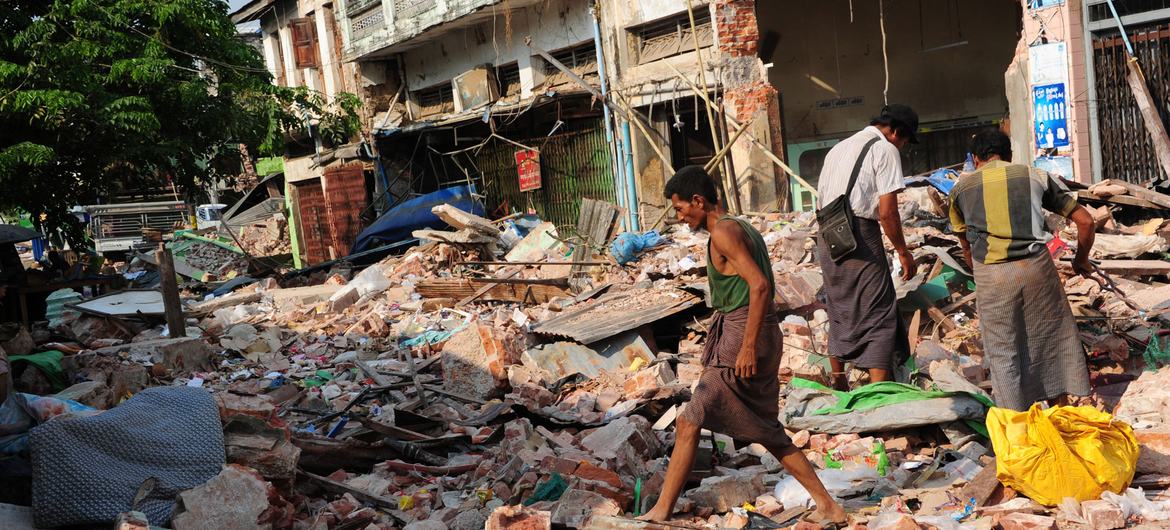
Survivors on earthquakes investigate the ruins of their homes in Pyinmana, Myanmar after the earthquake there.
Proactive planning
While earthquakes are among the deadliest natural dangers, it is the collapse of buildings that cause the most devastating effects. As such, proactive reduction of disaster risk such as making structures of earthquake-resistant to reduce deaths and financial losses.
Focus on risk-free urban development, UN-Habitat and the UN Disaster RISK RISK RISK RISK (UNDR) also works across Myanmar to mitigate the risk of future earthquakes being.
While only a little can be done to prevent natural dangers such as earthquakes from occurring, much can be done to reduce their effects.
As the reconstruction effort is underway, the UN is dedicated to “ensuring that every step we take makes the rebuilt areas stronger and more resilient than before,” said Anacláudia Rossbach, CEO of UN-Habitat.
